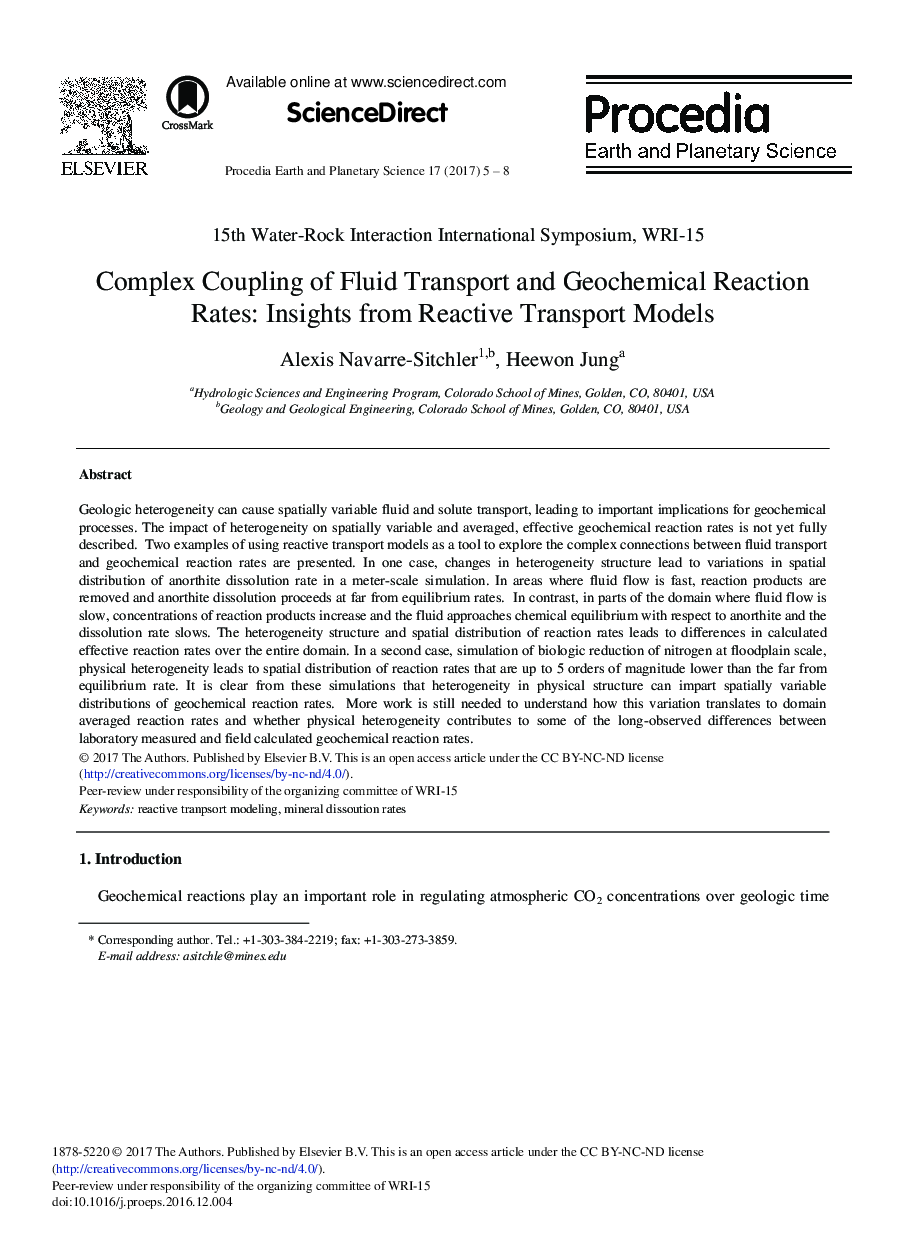| Article ID | Journal | Published Year | Pages | File Type |
|---|---|---|---|---|
| 5779220 | Procedia Earth and Planetary Science | 2017 | 4 Pages |
Abstract
Geologic heterogeneity can cause spatially variable fluid and solute transport, leading to important implications for geochemical processes. The impact of heterogeneity on spatially variable and averaged, effective geochemical reaction rates is not yet fully described. Two examples of using reactive transport models as a tool to explore the complex connections between fluid transport and geochemical reaction rates are presented. In one case, changes in heterogeneity structure lead to variations in spatial distribution of anorthite dissolution rate in a meter-scale simulation. In areas where fluid flow is fast, reaction products are removed and anorthite dissolution proceeds at far from equilibrium rates. In contrast, in parts of the domain where fluid flow is slow, concentrations of reaction products increase and the fluid approaches chemical equilibrium with respect to anorthite and the dissolution rate slows. The heterogeneity structure and spatial distribution of reaction rates leads to differences in calculated effective reaction rates over the entire domain. In a second case, simulation of biologic reduction of nitrogen at floodplain scale, physical heterogeneity leads to spatial distribution of reaction rates that are up to 5 orders of magnitude lower than the far from equilibrium rate. It is clear from these simulations that heterogeneity in physical structure can impart spatially variable distributions of geochemical reaction rates. More work is still needed to understand how this variation translates to domain averaged reaction rates and whether physical heterogeneity contributes to some of the long-observed differences between laboratory measured and field calculated geochemical reaction rates.
Related Topics
Physical Sciences and Engineering
Earth and Planetary Sciences
Atmospheric Science
Authors
Alexis Navarre-Sitchler, Heewon Jung,
